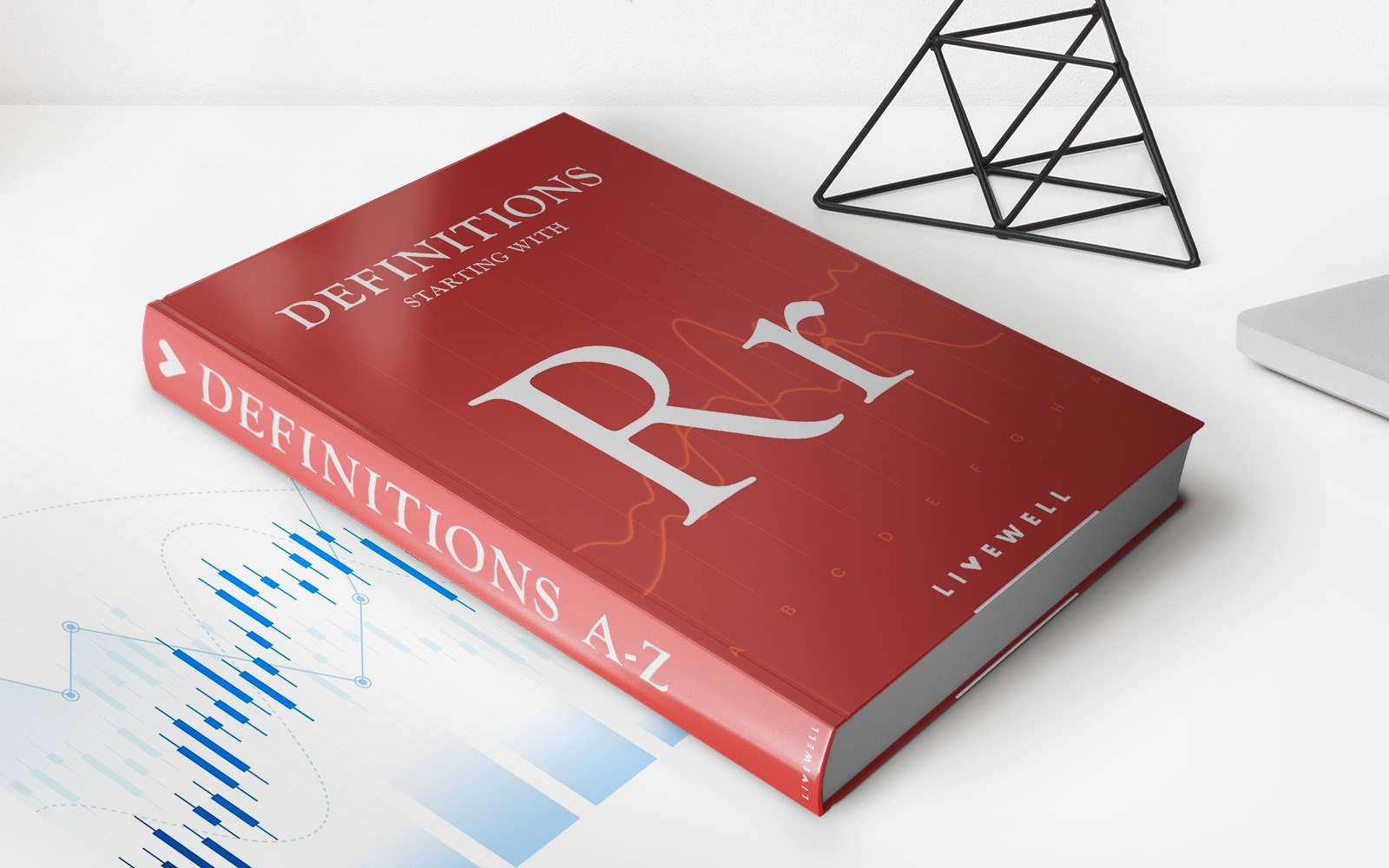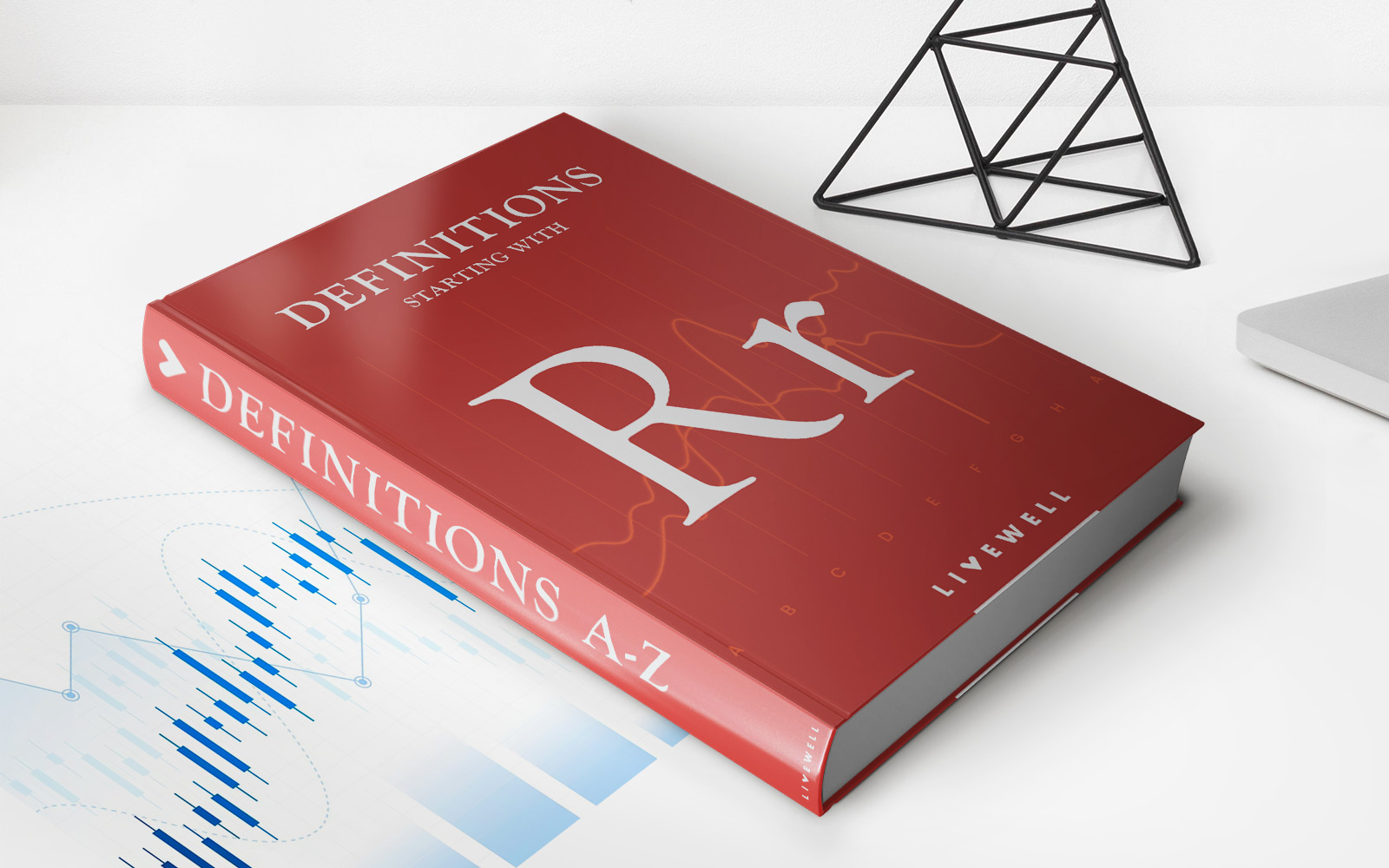

Finance
What Is Reference 1242 IRS?
Published: October 31, 2023
Learn more about Reference 1242 IRS in the finance world and understand its implications, benefits, and regulations.
(Many of the links in this article redirect to a specific reviewed product. Your purchase of these products through affiliate links helps to generate commission for LiveWell, at no extra cost. Learn more)
Table of Contents
Introduction
Welcome to the world of finance, where numbers, investments, and tax codes can sometimes feel overwhelming. In this article, we will explore a specific tax reference that might pique your interest – Reference 1242 IRS. Whether you are a seasoned investor or someone just starting to dip your toes into the financial sea, understanding the ins and outs of tax codes is crucial.
Reference 1242 IRS refers to a specific provision in the Internal Revenue Code that offers certain benefits to eligible individuals or businesses. This provision aims to incentivize investment in designated areas that could benefit economically disadvantaged communities. By providing tax benefits to investors, Reference 1242 IRS serves as a tool to spur economic growth and generate employment opportunities.
This article will delve deeper into the definition, purpose, eligibility criteria, benefits, drawbacks, and application process associated with Reference 1242 IRS. By the end, you will have a comprehensive understanding of this tax reference and be better equipped to make informed financial decisions.
Definition of Reference 1242 IRS
Reference 1242 IRS is a provision within the Internal Revenue Code that falls under the category of tax incentives. More specifically, it is a tax reference that provides benefits to individuals or businesses that invest in designated areas known as empowerment zones or enterprise communities.
Empowerment zones and enterprise communities are areas that face significant economic challenges, such as high unemployment rates and limited access to capital. These zones are identified by the government based on certain criteria, such as poverty levels and economic distress. The purpose of Reference 1242 IRS is to encourage investment in these areas in order to stimulate economic growth and revitalization.
Under Reference 1242 IRS, investors who meet specific eligibility criteria are entitled to tax advantages for their investments in these designated areas. These advantages can include tax credits, deductions, and deferrals. By offering these incentives, the government aims to attract investors and spur economic development in areas that need it the most.
It is important to note that Reference 1242 IRS is just one of several tax provisions aimed at promoting investment in economically distressed areas. Other similar provisions include the New Markets Tax Credit (NMTC) and the Opportunity Zones program. However, Reference 1242 IRS is unique in its specific focus on empowerment zones and enterprise communities.
Purpose of Reference 1242 IRS
The purpose of Reference 1242 IRS is to encourage investment in economically disadvantaged areas, known as empowerment zones and enterprise communities. These areas typically face challenges such as high unemployment rates, limited access to capital, and a lack of economic opportunities. The goal of Reference 1242 IRS is to stimulate economic growth and revitalization by incentivizing investors to contribute to the development of these communities.
By offering tax benefits to individuals or businesses who invest in empowerment zones or enterprise communities, Reference 1242 IRS aims to attract investors who may not have otherwise considered these areas for investment. The tax advantages provided under Reference 1242 IRS can help offset the risks associated with investing in economically distressed areas, making it more financially viable for investors.
Reference 1242 IRS also serves to promote job creation and economic development in these designated areas. By attracting investors and facilitating investment, the provision aims to generate employment opportunities for residents of empowerment zones and enterprise communities. This, in turn, can help reduce unemployment rates, increase disposable income, and improve the overall quality of life in these communities.
Furthermore, Reference 1242 IRS seeks to address income inequality and promote social equity. By focusing on economically distressed areas, the provision aims to provide opportunities for underprivileged individuals and communities. It seeks to bridge the economic gap by encouraging investment in areas that have historically been overlooked or neglected.
Overall, the purpose of Reference 1242 IRS is to foster economic growth, create jobs, and uplift economically disadvantaged areas by offering tax incentives to investors. It serves as a catalyst for positive change in communities that are in need of investment and development.
Eligibility Criteria for Reference 1242 IRS
In order to take advantage of the benefits offered by Reference 1242 IRS, individuals and businesses must meet certain eligibility criteria. These criteria are designed to ensure that the tax incentives are directed towards investors who are genuinely committed to making a positive impact in empowerment zones and enterprise communities. Here are some key factors to consider:
- Investment in Designated Areas: To be eligible for Reference 1242 IRS, the investment must be made in a designated empowerment zone or enterprise community. These areas are identified by the government based on specific criteria related to economic distress and poverty levels.
- Qualified Equity Investment: The investment must qualify as a “qualified equity investment” under Reference 1242 IRS. This generally refers to a cash contribution made to a qualified community development entity (CDE) that has been designated to receive investments in the designated areas.
- Hold Period: Investors must hold their qualified equity investment for a specified period of time in order to be eligible for the tax benefits. The hold period is typically seven years to fully maximize the incentives provided by Reference 1242 IRS.
- Substantial Investment: Reference 1242 IRS requires investors to make a substantial investment in the designated areas. While the exact amount may vary depending on the specific circumstances, it is generally expected that the investment will have a significant impact on the economic development of the community.
- Compliance with Regulations: Investors must comply with all relevant regulations and guidelines set forth by the Internal Revenue Service (IRS) in order to qualify for the benefits under Reference 1242 IRS. It is important to stay informed and ensure that all requirements are met throughout the investment process.
It is important to note that the eligibility criteria for Reference 1242 IRS may vary depending on the specific provisions and guidelines set forth by the IRS. Investors are strongly advised to consult with a tax professional or financial advisor to fully understand the requirements and determine their eligibility for the tax benefits.
Benefits of Reference 1242 IRS
Reference 1242 IRS offers several key benefits to individuals or businesses that invest in empowerment zones and enterprise communities. These benefits are designed to incentivize investment in economically disadvantaged areas and stimulate economic growth. Here are some of the advantages of utilizing Reference 1242 IRS:
- Tax Credits: One of the primary benefits of Reference 1242 IRS is the potential for tax credits. Investors may be eligible for tax credits that can offset a portion of their tax liability. These credits can help reduce the overall tax burden and increase the return on investment.
- Tax Deductions: Reference 1242 IRS also provides tax deductions for qualified equity investments made in designated areas. These deductions can help lower the taxable income, resulting in reduced tax liability for investors.
- Tax Deferrals: In addition to tax credits and deductions, Reference 1242 IRS may offer tax deferral benefits. This means that investors can defer paying taxes on their capital gains until a later date, allowing them to reinvest and potentially generate more returns from their initial investment.
- Community Impact: By investing in empowerment zones and enterprise communities, individuals and businesses can make a positive impact on the local communities. The investment can help create jobs, stimulate economic growth, and improve the overall well-being of the residents in these areas.
- Portfolio Diversification: Investing in designated areas through Reference 1242 IRS can provide investors with an opportunity to diversify their investment portfolio. By spreading investments across different asset classes and locations, investors can mitigate risk and potentially enhance their overall investment returns.
It is important to note that the specific benefits and incentives offered by Reference 1242 IRS may vary depending on the provisions and guidelines set forth by the IRS. Investors should consult with a tax professional or financial advisor to fully understand the potential advantages and ensure compliance with all relevant regulations.
Drawbacks of Reference 1242 IRS
While Reference 1242 IRS offers various benefits for investors, it is essential to be aware of the potential drawbacks associated with the provision. These drawbacks may impact the decision-making process and should be carefully considered before investing. Here are some of the drawbacks of utilizing Reference 1242 IRS:
- Investment Risk: Investing in empowerment zones and enterprise communities carries inherent risks. These areas may have higher levels of economic distress, limited infrastructure, or a less predictable business environment. Investors should thoroughly assess the risks associated with specific areas before committing their capital.
- Longer Timeframe: Reference 1242 IRS typically requires investors to hold their qualified equity investment for a specified period, usually seven years, to fully maximize the tax incentives. This may limit the liquidity of invested funds and tie up capital for an extended period of time.
- Regulatory Compliance: Utilizing Reference 1242 IRS involves complying with specific regulations and guidelines set forth by the IRS. Investors must ensure strict adherence to these requirements to maintain eligibility for the tax benefits. Any failure to comply could result in the loss of the anticipated advantages.
- Limited Investment Opportunities: The designated areas under Reference 1242 IRS may have a limited number of investment opportunities, especially in certain industries or sectors. This can make it challenging for investors to find suitable projects or businesses that align with their investment goals.
- Variable Return on Investment: Investments made in economically distressed areas may yield varying returns. The potential for higher returns and economic growth exists, but there is also the possibility of lower returns or even loss of capital. Investors must carefully assess the potential risks and rewards before committing to an investment.
It is crucial for investors to conduct thorough due diligence, seek professional advice, and weigh the potential drawbacks against the benefits offered by Reference 1242 IRS. A comprehensive understanding of both the advantages and disadvantages will help investors make more informed decisions and navigate the investment landscape more effectively.
How to Apply for Reference 1242 IRS
If you are interested in taking advantage of the benefits provided by Reference 1242 IRS, it is important to understand the application process. Here are the general steps to apply for Reference 1242 IRS:
- Research Designated Areas: Start by identifying the specific empowerment zones or enterprise communities in which you are interested in investing. Conduct thorough research to understand the economic conditions, investment potential, and any specific requirements associated with those areas.
- Consult with Professionals: Seek guidance from experienced tax professionals, financial advisors, or real estate experts who are knowledgeable about Reference 1242 IRS and the investment process. They can provide valuable insights and assist with navigating the application and investment procedures.
- Evaluate Investment Opportunities: Assess the available investment opportunities within the designated areas. Consider factors such as the industry, potential returns, risk profile, and alignment with your investment goals. Perform thorough due diligence to ensure that the investment meets your criteria.
- Prepare Application Materials: Once you have decided on an investment opportunity, gather all the necessary documentation and information required for the application process. This may include financial statements, business plans, legal documents, and any other relevant paperwork.
- Submit Application: Complete the application form provided by the Internal Revenue Service (IRS) for Reference 1242 IRS. Ensure that all information is accurate, and all required documents are included. Submit the completed application to the appropriate IRS office or online portal.
- Monitor Application Status: After submitting the application, monitor its status and maintain regular communication with the IRS. Stay informed about any updates or additional documentation required. It is important to respond promptly and meet any deadlines specified by the IRS.
- Review Tax Benefits: Once the application is approved, familiarize yourself with the specific tax benefits that you qualify for under Reference 1242 IRS. Understand the deductions, credits, and deferrals that will apply to your investment and ensure proper documentation and compliance for future tax filings.
Please note that the application process may vary depending on the specific guidelines and requirements set by the IRS. It is always recommended to consult with professionals to ensure the accuracy and completeness of the application and to maximize the benefits available under Reference 1242 IRS.
Documentation Required for Reference 1242 IRS
When applying for Reference 1242 IRS, it is essential to gather and submit the required documentation to support your investment and eligibility. The specific documentation may vary depending on your investment and the guidelines set forth by the Internal Revenue Service (IRS). Here are some commonly required documents:
- Proof of Investment: You will typically need to provide evidence of your qualified equity investment in the designated empowerment zone or enterprise community. This can include copies of investment agreements, purchase agreements, stock certificates, or other relevant documents.
- Financial Statements: Prepare and submit your financial statements, including balance sheets, income statements, and cash flow statements. These statements provide a snapshot of your financial position and help demonstrate your ability to make the investment.
- Business Plans: Provide a detailed business plan outlining the goals and objectives of your investment. Include information on your industry analysis, market research, projected financials, and how your investment will contribute to the economic development of the designated area.
- Legal Documents: Depending on the nature of your investment, you may be required to submit various legal documents. This can include articles of incorporation, operating agreements, partnership agreements, or any other relevant legal contracts.
- Proof of Compliance: Ensure that you have documentation proving your compliance with the regulations and requirements of Reference 1242 IRS. This may include signed affidavits, certifications, or any other supporting documents verifying your adherence to the provisions of the tax reference.
- Additional Supporting Documents: The IRS may request additional supporting documents to assess your eligibility and evaluate the impact of your investment. These documents can vary depending on the specifics of your investment and the designated area. Examples may include market studies, environmental impact assessments, employment plans, or community outreach initiatives.
It is crucial to review the guidelines provided by the IRS and consult with tax professionals or advisors who are experienced in dealing with Reference 1242 IRS. They can help ensure that you have all the necessary documentation in order and that it is properly prepared and submitted to meet the requirements outlined by the IRS.
Conclusion
Reference 1242 IRS provides a valuable opportunity for investors to make a positive impact on economically disadvantaged areas while enjoying potential tax benefits. By investing in designated empowerment zones and enterprise communities, individuals and businesses can contribute to the economic growth, job creation, and community development of these areas.
While Reference 1242 IRS offers enticing benefits such as tax credits, deductions, and deferrals, it is important to carefully consider the risks and drawbacks associated with investing in economically distressed areas. Conducting thorough research, seeking professional advice, and assessing the potential return on investment are crucial steps to make informed decisions.
To apply for Reference 1242 IRS, investors must meet the eligibility criteria, prepare the required documentation, and submit the application to the IRS. Working closely with tax professionals and financial advisors can enhance the accuracy and effectiveness of the application process.
By investing in empowerment zones and enterprise communities through Reference 1242 IRS, investors not only have the potential to achieve financial returns but also contribute to the improvement and revitalization of underserved communities. It is a way to participate in socially responsible investing, promote economic equality, and create a positive impact on individuals and communities in need.
As you embark on your journey to leverage Reference 1242 IRS, remember to stay informed and keep abreast of any updates or changes in the regulations. By actively engaging in these investment opportunities, you have the chance to make a tangible difference while potentially benefiting from the tax incentives.
In conclusion, Reference 1242 IRS offers a unique avenue for investors to align their financial goals with social impact. By investing in empowerment zones and enterprise communities, you have the potential to make a positive change in these areas while enjoying the tax benefits offered by the provision. It’s an opportunity to invest in the future of underserved communities and contribute to their economic growth and revitalization.














